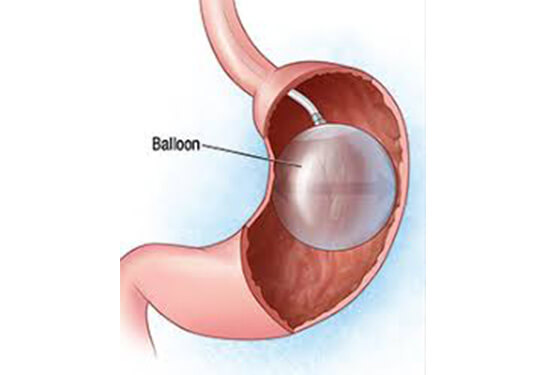
An intragastric balloon is a newer kind of weight loss surgery. A saline-filled silicone balloon is placed in your stomach, which helps you lose weight by limiting how much you can eat. It also makes you feel fuller faster.
This procedure is an option if you’re overweight or obese, and diet and exercise haven’t worked for you.
Like other bariatric procedures, an intragastric balloon requires commitment to a healthier lifestyle. You need to make permanent healthy changes to your diet and get regular exercise to help ensure the long-term success of the intragastric balloon procedure.
The placement of an intragastric balloon helps you lose weight. Weight loss can lower your risk of potentially serious weight-related health problems, such as:
An intragastric balloon and other bariatric procedures or surgeries are typically done only after you’ve tried to lose weight by improving your diet and exercise habits.
An intragastric balloon may be an option for you if:
Intragastric balloons aren’t the right choice for everyone who is obese. A screening process will help your doctor see if the procedure might be beneficial for you.
Pain and nausea affect about one-third of people soon after insertion of an intragastric balloon. However, these symptoms usually only last for a few days after balloon placement. And they can be treated with oral medication.
Serious risks after intragastric balloon placement and removal are rare. It’s possible that the balloon could deflate. If the balloon deflates, there’s also a risk that it could move through your digestive system. This can cause a blockage that may require a further procedure.
Other possible risks include ulcers or a hole (perforation) in the stomach, which might require surgery to fix.
If you’re going to have an intragastric balloon placed in your stomach, your health care team will give you specific instructions on how to prepare for your procedure. You may need to have various lab tests and exams before your procedure.
You may need to restrict what you eat and drink, as well as which medications you take, in the time leading up to the procedure. You also may be required to start a physical activity program. What you can expect The intragastric balloon procedure is done in the endoscopy unit as an outpatient procedure. You’ll be sedated for the procedure. During the procedure, the doctor advances a thin tube (catheter) loaded with the intragastric balloon down your throat into your stomach. Next, the doctor advances an endoscope a flexible tube with a camera attached down your throat into your stomach. The tiny camera
allows your doctor to see the balloon as he or she fills it with saline.
The procedure takes about a half-hour. You can normally go home several hours after the procedure.
You can have small amounts of liquid starting about six hours after the procedure. The liquid diet generally continues until the start of the second week, when you can start eating soft foods. You’ll probably be able to start eating regular food around three weeks after the insertion of the intragastric balloon.
Intragastric balloons are left in place for up to 6 months, and are then removed using an endoscope.
You’ll also have frequent meetings with members of your medical team, such as your nutritionist and psychologist, after your procedure.
An intragastric balloon can make you feel fuller faster than you normally would, which often means you’ll eat less. One reason why may be that the intragastric balloon slows down the time it takes to empty the stomach. Another reason may be that the balloon seems to change levels of hormones that control appetite.
The amount of weight you lose also depends on how much you can change your lifestyle habits.
Loss of about 10 to 15 percent of body weight is typical during the six months following intragastric balloon placement. In a randomized clinical trial with 255 adults with a BMI between 30 and 40, people who had the intragastric balloon procedure along with behavioral therapy lost 29 percent of their excess weight, compared to 14 percent in a group that received behavioral therapy alone.